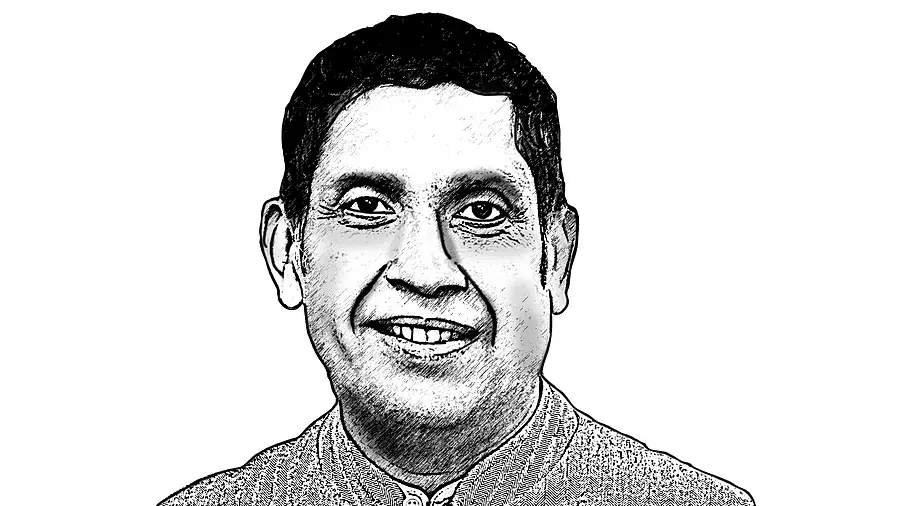Southern states in India are now protesting against “Representation without taxation”!
Praveen Chakravarty
February 18, 2024

Praveen Chakravarty is a Congressman curious about correlations, causes & consequences @pravchak
Something unique and rare in Indian political history happened recently. Karnataka Chief Minister Siddaramaiah, Deputy Chief Minister D K Shivakumar, and many senior cabinet ministers went to Delhi and sat in a dharna for a “My State My Tax” protest. They were joined by ministers and leaders from the other southern states of Kerala and Tamil Nadu and supported in spirit by Telangana. It was an extraordinary development where democratically elected heads of India’s states were forced to go to Delhi to demand their share of tax revenues and taxation rights. “No taxation without representation” was the slogan for the American independence struggle against the British. Southern states in India are now protesting against “Representation without taxation”!
With the southern states’ protests and the Supreme Court’s recent ruling, the late BJP finance minister Arun Jaitley’s contribution of the phrases “cooperative federalism” and “electoral bonds” to India’s political lexicon have been rendered dubious and hollow by the Modi government.
Elected governments across the world rely on direct and indirect taxes for revenues to implement schemes and fulfil their electoral promises. As per the Constitution, state governments in India do not have powers to levy direct income and corporate taxes, unlike in other federal nations. After GST, state governments lost their exclusive powers for indirect taxes, too. They are only left with powers to tax sin goods, fuel, property, electricity, and agriculture, which constitute a small slice of overall tax revenues. To put it simply, post-GST, democratically elected state governments in India are forced to be almost entirely dependent on the Union government for resources.
To make matters worse, the Modi government, true to its governance style, has politicised India’s federalism through duplicitous means of cesses and surcharges to garner greater share of tax revenues for itself and minimise states’ share.
When a Karnataka resident buys a certain good or service and pays Rs 100 as central taxes on it, the Union government keeps Rs 58 of it and shares Rs 42 with the states. But for the same transaction, if Rs 100 is charged as cess by the Union government, then it gets to keep all of it and not have to share it with the states. This is a quirk and a relic of India’s historical taxation laws. So, a “cooperative federalism”-minded Union government will try to minimise cess and maximise tax revenues which can be shared with state governments for their governance. Unsurprisingly, the Modi government did the exact opposite in its decade-long tenure.
Cesses and surcharges have nearly doubled as a share of revenues from 12% to 20% of overall tax revenues during Modi’s tenure. In 2014, overall tax revenues collected by both the Union and state governments was Rs 18 lakh crore, which rose to about Rs 46 lakh crore by 2023. But a whopping 10% of this increase came from cesses and surcharges, depriving state governments of nearly Rs 3 lakh crore. This is a huge amount, and hence state governments are crying foul. This has impacted every state government but because of the extreme high-command culture and imposition of their will on BJP-ruled states, BJP Chief Ministers can only grumble in private rather than join Karnataka, Kerala, Tamil Nadu, Bengal and Telangana in an overt protest. The Modi government’s “cess mess” has stained India’s fabric of federalism.
This deceit by the Modi government is what has angered the high tax-contributing southern states and prompted them to question the transfer of their tax revenues to poorer northern states. The average person in Karnataka or Tamil Nadu pays Rs 20,000 annually in taxes while the average person in Madhya Pradesh or Uttar Pradesh pays just Rs 4,500. But the average person in Bihar, UP or Madhya Pradesh get back Rs 260 for every Rs 100 they pay in taxes, while the average Kannadiga gets back only Rs 40. Over the course of Modi’s tenure, this gap has only widened, and little progress has been made in bridging either the fiscal or the development gap between the richer and poorer states. Now, the contributing states are questioning the need for such an extreme skew in the distribution of tax revenues.
The very idea of India as a ‘Union of states’ is now precarious. There is a complete breakdown of trust and trustworthiness between the Union and states. This growing banyan tree of distrust between states was sown by the duplicitous fiscal approach of the Modi government, watered by the imposition of a ‘one nation one policy’ framework, branched by the extreme politicisation of institutions such as ED, CBI, Income Tax, Election Commission, and tended by ‘governor’ politics. It is no secret that most states harbour deep disenchantment with the Modi government’s anti-federal style of governance. It so happens that the more developed southern states, which are not ruled by the BJP, are able to express their resentment more freely than their Maharashtra, Haryana and Gujarat counterparts.
Finance Minister Nirmala Sitharaman exemplifies this disdain for states, especially those that are governed by non-BJP parties, with her scornful public rebukes and shallow pomposity, evident in the “white paper” she released in parliament recently. It claimed that India’s economy and infrastructure have grown in the last decade, all due to the untiring efforts and the inordinate skills of Narendra Modi. It was like parents celebrating the growth in age of their child from 5 to 15 after a decade. Even if cricketer Ravindra Jadeja or actor Akshay Kumar had been Prime Minister in this period, GDP would have grown, more toilets and houses constructed, more airports, ports and highways built, and India would have been the Chair of the G-20. The real question is not whether the child has grown in age, which is largely inevitable, but how tall, healthy, and happy is the child for her age. Ask the states!
